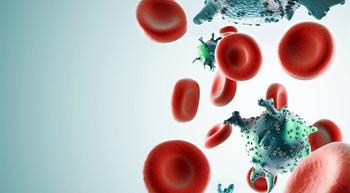
Neighborhood Poverty and Medicaid Insurance Coverage May Impact Risk for Mortality After Stem Cell Transplantation in Children with Malignant Disease
The study found that the risk increased despite receiving care at a highly specialized center, although neighborhood poverty did not have the same degree of impact on children with the nonmalignant disease.
Both neighborhood poverty and having Medicaid insurance may increase the risk for mortality related to hematopoietic cell transplantation, also known as stem cell or bone marrow transplantation, in children with malignant disease despite undergoing the transplant at a highly specialized center, according to a study published in Blood.
In addition, neighborhood poverty did not significantly impact outcomes such as overall survival (OS), relapse and infection after hematopoietic cell transplantation in children with malignant and nonmalignant disease.
“Our study shows that even after children with cancer have successfully accessed this high-resource treatment at specialized medical centers, those who are exposed to poverty are still at higher risk of dying of complications after treatment and of dying overall,” said Dr. Kira Bona, attending physician at Dana-Farber/Boston Children’s Cancer and Blood Disorders Center and lead author of the study, in a release from the American Society of Hematology. “Simply providing the highest quality complex medical care to children who are vulnerable from a social perspective is inadequate if our goal is to cure every child with cancer.”
Hematopoietic cell transplantation is the foundation of curative therapy for children with cancer, and advances have been made in identifying children with increased risk for morbidity and mortality related to transplantation based on disease, donor and recipient biologic characteristics. Even with these advances, the rates of mortality after hematopoietic cell transplantation in children remains significant, which is why it is important to identify novel risk factors that may impact outcomes.
In this current study, researchers aimed to assess the potential link between neighborhood poverty and outcomes after
Poverty on a neighborhood level, the primary exposure of interest, was defined a priori, or before researchers looked at results of this study, by liking residential ZIP codes at the time of the hematopoietic cell transplantation and U.S. census data. High-poverty neighborhoods were defined as ZIP codes with at least 20% of people living below 100% of the federal poverty level, and low-poverty neighborhoods were defined as ZIP codes with less than 20% of people living below the federal poverty level.
The primary outcome of interest for this study was OS, which was defined as the time from hematopoietic cell transplantation to all-cause death. Secondary outcomes included acute and chronic graft versus host disease, and infection up to 100 days after the transplantation, in addition to transplant-related mortality and relapse in children with malignant disease. Follow-up was conducted for a median of 74 months in children with malignant disease and for 72 months in those with nonmalignant disease.
In children with malignant disease, 15% lived in high-poverty levels and 35% had insurance through Medicaid. In contrast, for children with nonmalignant disease, 13% lived in high-poverty neighborhoods and 35% were insured by Medicaid.
Neighborhood poverty was not associated with any outcome after hematopoietic cell transplantation in children with nonmalignant disease. Children with malignant disease had an increased risk for transplant-related mortality based on neighborhood poverty, although it did not impact OS or other outcomes after transplant.
Compared with children with private insurance, those
“That a child’s insurance status is independently associated with mortality following (hematopoietic cell transplantation) for malignant disease is striking in the modern era,” the study authors wrote. “Steady improvements in pediatric (hematopoietic cell transplantation) outcomes over the last decade reflect a fierce commitment to identification of novel risk factors and refinements in risk stratification and (hematopoietic cell transplantation) management. Our data suggest a novel direction for future investigation in children undergoing (hematopoietic cell transplantation) for malignant disease, considering social determinants of health alongside biology, with attention to innovation in care delivery strategies.”
For more news on cancer updates, research and education, don’t forget to




